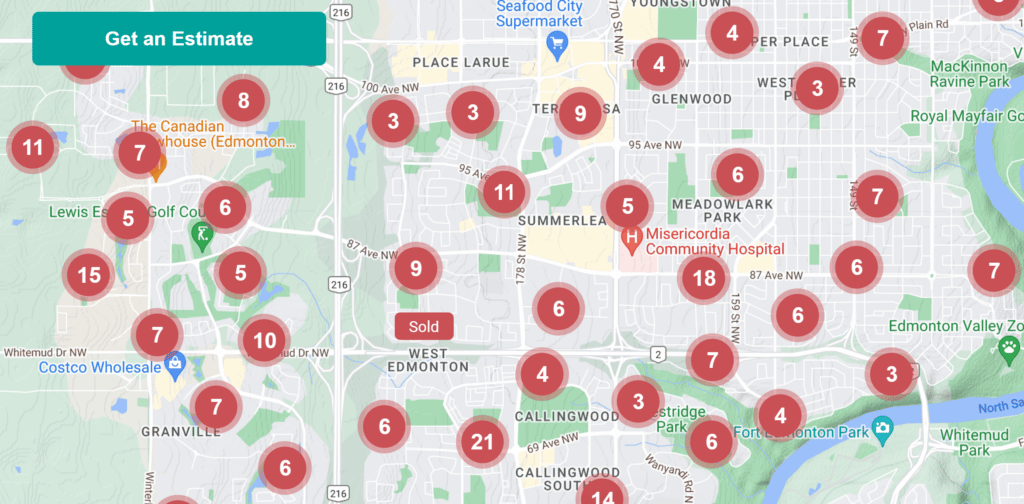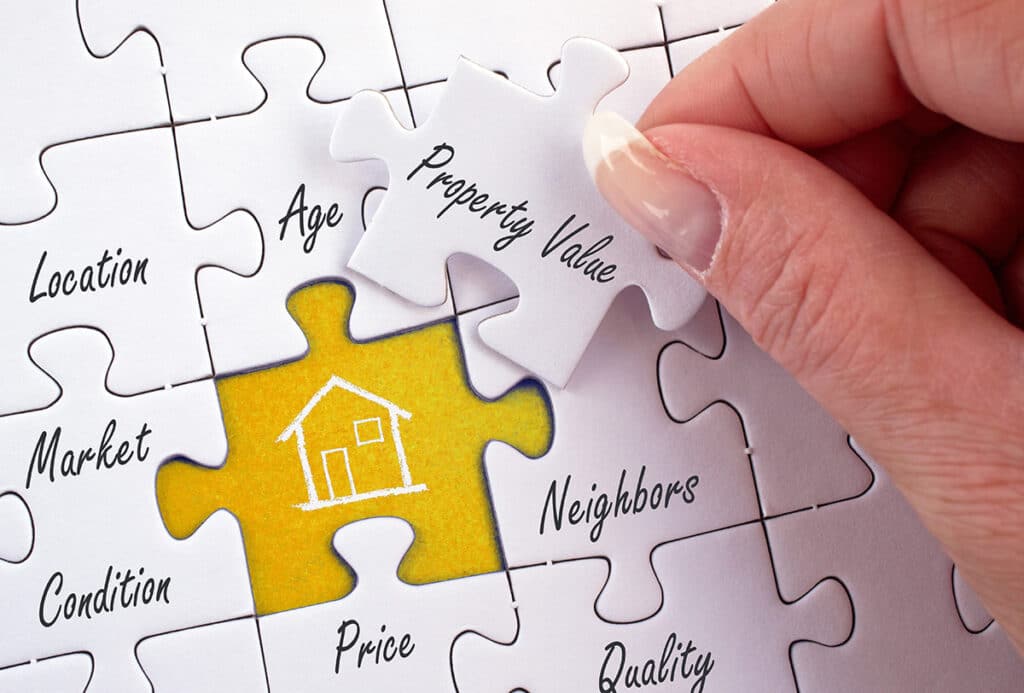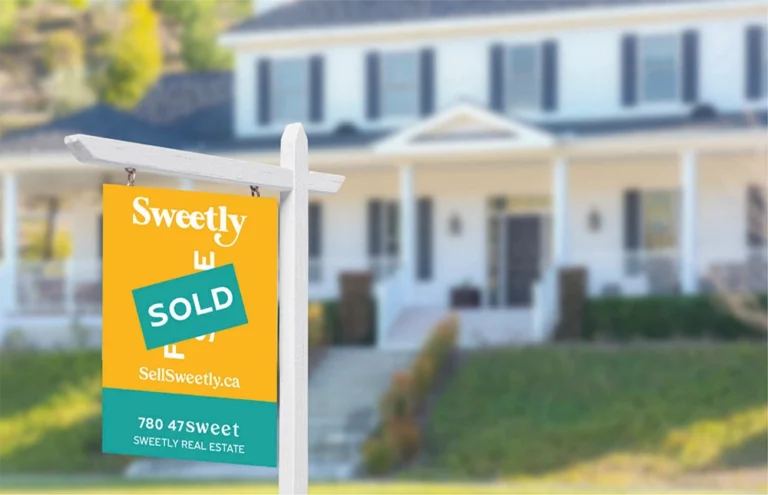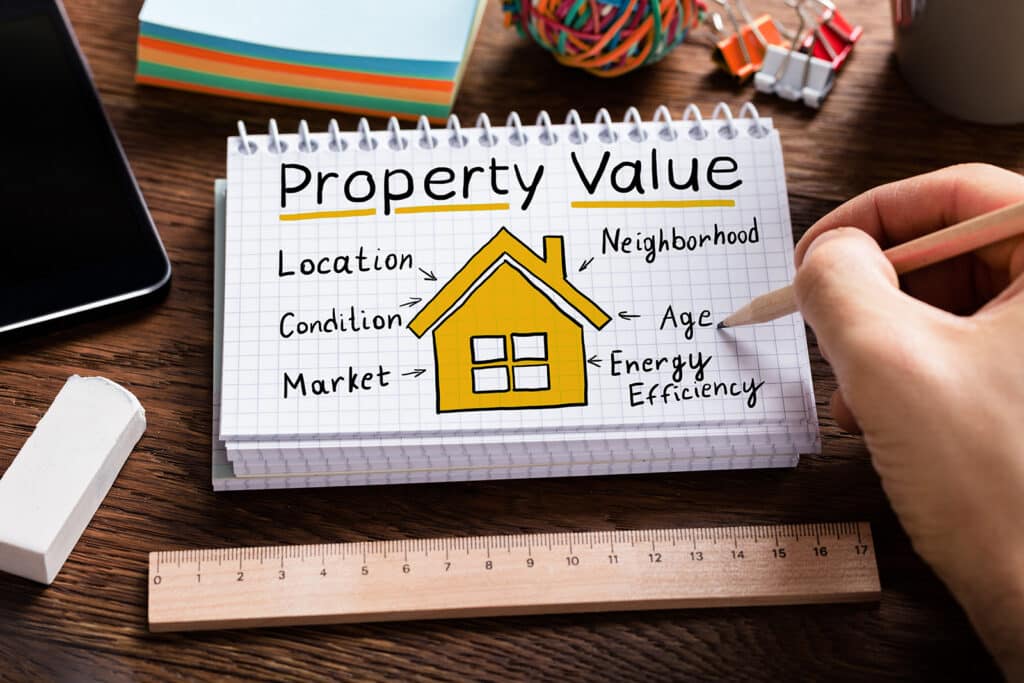Through a “Comparative Market Analysis,” a REALTOR® can estimate the value of a home. Unlike a home appraisal, you cannot use CMA reports to apply for a loan or in civil proceedings. A real estate evaluation is not the same as an appraisal.
However, some REALTORS® will do a comparative market evaluation for free in the hope of winning a listing. You should keep in mind that these are not binding or regulated and a REALTOR® may tell you what you want to hear to gain your business. If you are looking to get a home appraisal/CMA for free in Alberta, below is what you need to know.
Quick Take: Do real estate agents appraise homes in Alberta?
- Comparative Market Analysis is a REALTOR®’s professional opinion on the current value of a home.
- A home appraisal is an appraiser’s opinion on the value of a home.
- Home buyers do not have an obligation to share real estate reports with sellers.
- Comparative Market Analysis can help the seller identify a good price to list their home at.
- The Real Estate Council of Alberta sets the standards on reports that can be used to acquire lending or in civil proceedings.
- You cannot use the results of a CMA to acquire lending or in civil proceedings.
- Real estate agents should use at least three comparable properties in CMA analysis.
- REALTOR®-provided CMA reports from a trusted source can be more accurate compared to online tool data.
How is the sale price of a home determined in Alberta?
There are two ways to estimate the current market value of a home. One is a home appraisal, and the other is a Competitive/Comparative Market Analysis.
A home appraisal entails:
- An in-depth analysis of the home’s interiors and exteriors.
- An evaluation of the home’s fixtures, additions, and features.
- Measuring square footage.
- Comparing the home to recently sold homes in the area.
Who needs a Comparative Market Analysis?
If you intend to list a property in Alberta, you will need a Comparative Market Analysis/CMA or Competitive Market Analysis. The results will help you set an appropriate listing price.
What is the primary purpose of Comparative Market Analysis?
Just like a home appraisal, a Comparative Market Analysis aims to estimate the value of a home. To estimate value, a REALTOR® may consider factors including the condition of the house, style, age, size, and location.
How do I run a CMA on my property?
To conduct a CMA, a REALTOR® will compare the house with recently sold or listed properties in the neighborhood. Comparable properties, as the name suggests, have similar characteristics, including size, style, and materials used for construction.
The questions the analysis may ask are:
- What is the current value of similar homes?
- How much would it take to replicate the home? Considering materials and related factors.
The exercise is not as in-depth as an appraisal, but it can give you a rough estimate of what your home is worth.
Number of comparables
Just like a home appraisal, real estate agents prepare a Comparative Market Analysis after evaluating at least three comparable homes sold in the last 90-180 days. Why? Market conditions.
A home appraisal will typically remain relevant for three to six months. Consequently, comparables should be:
- As close to the subject home as possible.
- The estimate should reflect current market conditions.
The recommended number of comparable properties is three to ten nearby homes, but a REALTOR® may widen the search if there are no similar homes in the same neighbourhood.
What to look for in comparable properties for CMA
- The location/neighborhood. It is good practice to include homes sold or listed within the same neighborhood as the subject property. We recommend homes located within the same neighborhood in a one to two-mile radius of the subject property.
- Age of the home. The difference in age between subject property and comparables should be one to five years.
- The type of home. A REALTOR® may filter comparable properties using style, floor plan, and materials used in construction.
- The number of rooms and bathrooms.
- Additions or extensions. Could be a garage, pool, extra living space and so on.
- Acreage. The size of the land has an impact on the value of the property.
What adds or diminishes value in Comparative Market Analysis?
One question real estate agents ask when conducting a CMA is: How does the property differ from comparables?
The estimate could be higher if there are additions to the home or if the seller made improvements. Consequently, if you make any improvements to a house you intend to sell, you should keep the receipts.
Also, it is worth consulting with a REALTOR® before you make any improvements to the home. That way -you can avoid unnecessary additions or improvements that add little to no value to the home.
What is the difference between a home appraisal and Comparative Market Analysis?
The main difference between a home appraisal and Comparative Market Analysis is the bank requests or requires a home appraisal before it approves funding. This means that a home appraisal is seen as more legitimate than a CMA. Remember, buyers in Alberta do not have a legal obligation to share the results of a home appraisal with the seller.
The question is, how can the seller be sure that the offer is fair?
The seller may (1) Pay for a home appraisal. (2) You may request your REALTOR® to conduct a CMA for free.
What is the benefit of a CMA for the seller?
Just like a home appraisal, a CMA is an expert’s opinion on the current value of a home or property. Professional opinions differ based on the factors considered for the analysis.
What do you get after CMA?
After a CMA, your REALTOR® will recommend a range at which you should sell the home. For instance, it could be $350,000 to $400,000. The value may not be as accurate as a home appraisal, but it gives you an idea of the worth of the property.
Can the bank use the results of a CMA to approve funding?
Unlike a home appraisal report, the buyer cannot use a CMA to acquire lending, refinancing, or in civil proceedings.
Consequently, if you are applying for a mortgage, your lender will require you to pay for an appraisal.
Who decides the final listing price of a property in Alberta?
In Alberta, the seller decides the final listing price. It is thus in the best interest of the seller to ensure that he is getting the right price for the home.
To that end, you may request your REALTOR® to conduct a Comparative Market Analysis.
What to remember
- Canada’s competition laws do not set REALTOR® commission rates. REALTORS® typically charge 3% to 7% or more, depending on the agreement in place.
- Some REALTORS® in Alberta offer free Competitive market analysis to try to gain your business.
- You may negotiate commissions with the REALTOR®.
Can a house seller increase the listing price of a home in Alberta?
If you are yet to accept any offer on the home, it is within your rights to increase or decrease the price. Once you accept an offer, you become legally bound by the contract.
How to conduct a CMA in Alberta
Depending on the REALTOR®’s experience, he may use calculations or online tools. One tool you may use to calculate Comparative Market Analysis is Sweetly’s Home Estimate.

But it is advisable to only use local REALTORS®. The reason for that is:
- Local REALTORS® understand the local housing market and are better placed to answer hard questions. Additionally, a local REALTOR® may have sold a home similar to your’s multiple times, meaning they can provide accurate estimates compared to online tools.
- Local real estate agents have access to local professionals, including home appraisers and real estate attorneys. Consequently, they may have access to real estate data that outsiders do not have access to.
Step 1: Define the subject property.
When conducting a Comparative Market Analysis, a REALTOR® will begin with a description of the subject property. Property descriptions typically include:
- The size of the land the property sits on.
- Subdivisions and floor plan.
- The number of rooms and amenities.
- Additions, including garages, patios, and so on.
- The condition and style of the home.
- The house’s uniqueness compared to other properties in the area.
Step 2: Use a Multiple Listing Service
REALTORS® use Multiple Listing Services to find recently sold properties in the area. To narrow down the search, the REALTOR® may employ filters including:
- The year of construction.
- The number of rooms and square footage.
- Additions, including garages and pools.
Note: You can use Sweetly’s Sold Data to view homes sold recently in your area and get a general idea of what your home may be worth.

Step 3: Analyze the data
The last step in the CMA process is analyzing the data and estimating the value of the home.
As mentioned, the REALTOR® will not provide an exact figure. Instead, what you will get is a price range.
Can the seller ask for a copy of an appraisal report?
As mentioned, home sellers and buyers are not obligated to share real estate appraisal reports.. But you should consider asking for a copy if you have doubts about the offer.
Some buyers may share a copy, and some may not. Why?
If a home appraisal comes in higher than the offer, the seller has the option of negotiating a higher price or backing out if the contract allows it. Consequently, sharing the results of a home appraisal may not be in the best interest of the buyer.
Can you use the CMA report to increase the price of a home after signing a contract?
After you have signed a contract, NO. You cannot use a CMA report to increase the price of a home.
Can you do a Comparative Market Analysis on your own?
Yes. If you have access to local real estate data (like Sweetly’s Sold Data), the questions you should answer are:
- How many comparable homes have sold recently in the area?
- How long did each home take to sell?
- How much did comparable homes sell for compared to the listing price?
Steps to create a CMA report on your own
- Decide what resources to use. You may use a local Multiple Listing Service of your choosing.
- Gather and organize data. We recommend using spreadsheets.
- Compile and analyze the data.
- Use comparable property data to estimate market value.
After analyzing the data, you should have a rough estimate of what your home is worth.
What is the best way to do a CMA?
The best way to do a CMA is with the help of an experienced local REALTOR®. Why?
Local REALTORS® understand the current condition of the local housing market. The easiest way to see what your home is worth in Canada is to use Sweetly’s Home Estimate calculator, once you’ve established a baseline we can have a REALTOR® or Appraiser come look at your home to establish fair market value.












